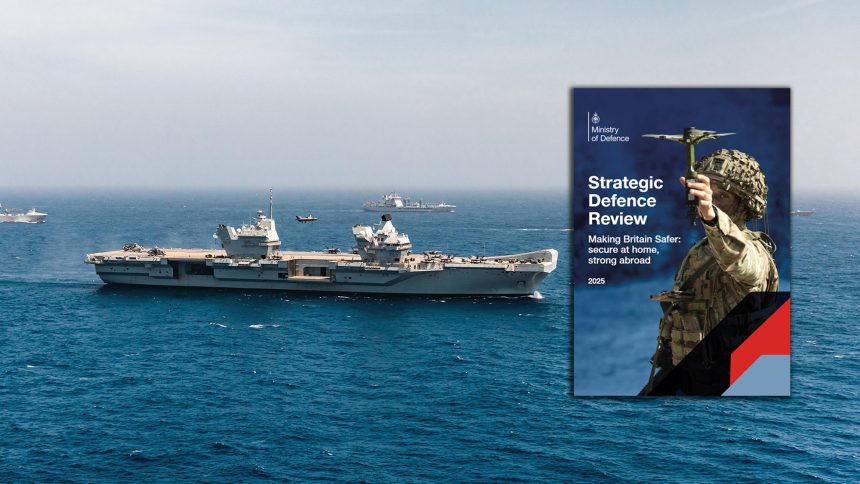The 144-page SDR falls short of detailing a comprehensive future order of battle, but does offer 62 recommendations which ministers say will be accepted in full.
The long awaited Strategic Defence Review (SDR) has been published by the UK Government. The 144-page SDR falls short of detailing a comprehensive future order of battle, but does offer 62 recommendations which ministers say will be accepted in full.
While we have not been given the solid numbers and procurement plans that many have hoped for – these will likely be reserved for future releases, like the rumored Command Paper due later in the year – the independent reviewers who conducted the SDR offered key recommendations which give indications of which directions the British armed forces will take over the coming years.
Snippets of the review were revealed to the UK national press over the weekend, before Prime Minister Keir Starmer held a press conference in Glasgow detailing some of the decisions that were taken as a result of it on the morning of Jun. 2, 2025. This earned a strong rebuke from Lindsay Hoyle, Speaker of the House of Commons, who slammed the Government for providing these details in advance of an official statement to the House or the release of any advance copies to members of the Opposition or the Defence Select Committee.
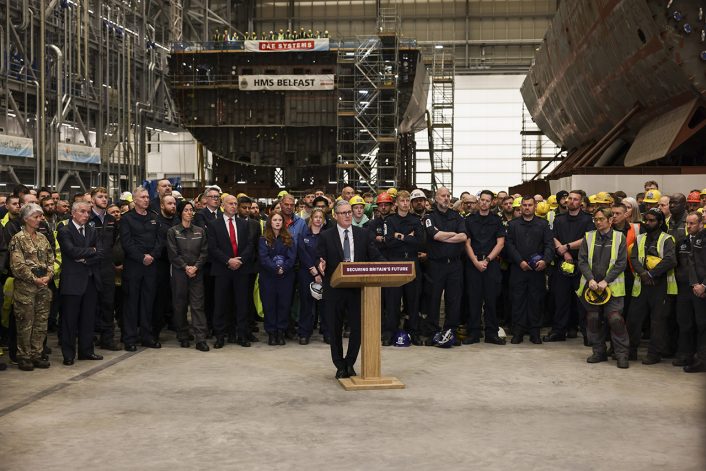
The full text of the review was subsequently released following a statement to the House by Secretary of State John Healey, who said: “The world has changed, and we must respond. The SDR is our Plan for Change for defence: a plan to meet the threats that we face, a plan to step up on European security and to lead in NATO, a plan that learns the lessons from Ukraine, a plan to seize the defence dividend resulting from our record increase in defence investment and boost jobs and growth throughout the United Kingdom, and a plan to put the men and women of our armed forces at the heart of our defence plans, with better pay, better kit and better housing. Through the SDR, we will make our armed forces stronger and the British people safer.”
Air Launched Nuclear Strike Remains Unconfirmed
Members of Parliament were particularly interested in clarification regarding a report by The Sunday Times, which we covered here, that the review would recommend the procurement of F-35As with a view to commission a tactical air-launched nuclear strike capability.
The SDR does not make a specific mention regarding the development of this new nuclear capability, but it does suggest that future UK F-35 procurement could include F-35As as well as F-35Bs: “More F-35s will be required over the next decade. This could comprise a mix of F-35A and B models according to military requirements to provide greater value for money.”
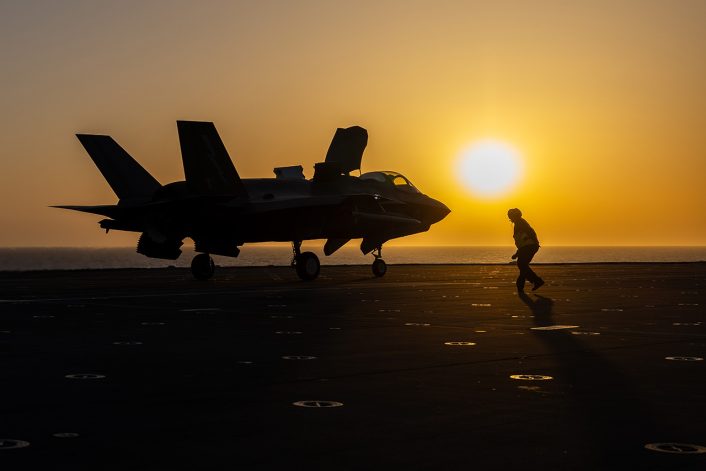
In terms of the UK joining the NATO nuclear sharing program, the review offers only this brief recommendation: “Commencing discussions with the United States and NATO on the potential benefits and feasibility of enhanced UK participation in NATO’s nuclear mission.”
Otherwise, the SDR reaffirms a strong commitment to continuous at sea deterrence (CASD) provided by four ballistic missile submarines (SSBN). Four Dreadnought class SSBNs, currently under construction to replace the existing four Vanguard class submarines, will field Trident missiles carrying the Astraea warhead. Astraea, also known as the A21/Mk7 warhead, replaces the Holbrook warhead in service at present. Both designs are UK designed and produced, though are informed and guided by equivalent U.S. weapons deployed on their identical Trident missiles.
The Government announced £15bn will be invested into the sovereign warhead program over the course of this Parliament (2024-2029), supporting 9,000 jobs across the UK. This would include roles at the Atomic Weapons Establishment (AWE) facilities in Aldermaston and Burghfield as well as elsewhere.
To support the nuclear deterrent, as well as wider defence taskings like carrier strike, up to 12 next generation nuclear-powered attack submarines are now planned to succeed the eventual fleet of 7 Astute class boats. The new design, currently named SSN-AUKUS, will be operated by both the Royal Navy and the Royal Australian Navy.
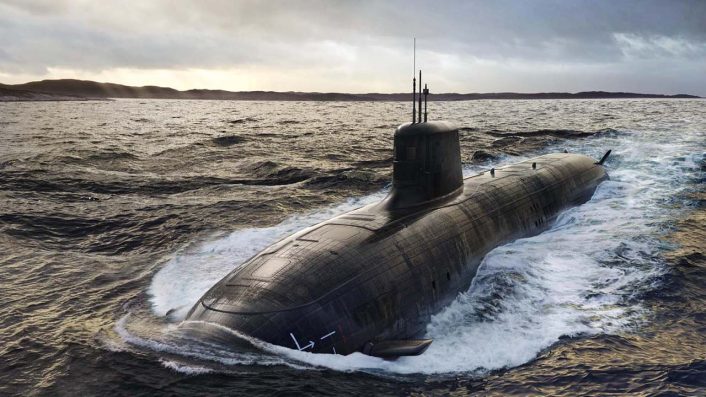
These new submarines would enter service from the late 2030s, and will require a significant expansion of production capacity at BAE Systems in Barrow-in-Furness. The government’s aim is to reach a point where a submarine is able to be produced at this facility every 18 months.
Expanding and Protecting the Royal Air Force
Aside from the suggestions regarding a mixed fleet of F-35s, the plans for RAF combat air remain largely unchanged from before – Typhoons, F-35s, and GCAP. Elsewhere in the RAF, the SDR recommends a number of expansions and replacements of existing capabilities.
Identifying a shortfall in RAF air transport capacity, the report suggests augmenting the fleet with a purchase of additional Airbus A400M Atlas C1 airlifters. Alternatively, the RAF is encouraged to seek partnerships with private providers to provide additional airlift capacity for missions not requiring a full military specification aircraft. This would then free more of the A400M, C-17 Globemaster III, and A330 Voyager fleet for ‘higher end’ taskings.
RAF Brize Norton is identified as a chokepoint in the UK’s airlift strategy. The base has been the home of the entire RAF transport fleet since 2011, and has famously suffered a number of closures due to the runway being affected by hot weather. Defence commentators have frequently pointed out this vulnerability, arguing, with strong justification, that one well timed and executed surprise attack or act of sabotage could ground the entire RAF airlift and air refuelling force. Plans are in place to rectify the runway issues, but this would not remove the overall vulnerability problem.
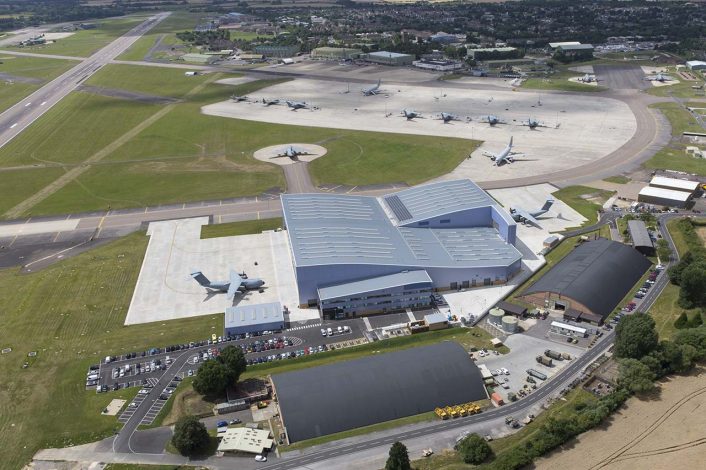
However, it also recognises that the financial implications of duplicating such a large airbase would be limiting in the current economic climate so instead recommends the establishment of official operating locations at commercial airfields, legislated by a Defence Readiness Bill. In effect, this would translate the Agile Combat Employment strategies practiced by RAF combat air to the wider air force as a whole. Dispersal of aircraft during closures at RAF Brize Norton has already taken place, but this would formalise the process further.
General air defence of the UK as well as airfields specifically is to be boosted by a £1bn investment. The UK currently has no permanent homeland air defence capability beyond its quick reaction alert (QRA) Typhoons. British Army units operating Sky Sabre – the only ground based surface-to-air missile in UK service beyond man-portable systems, intended primarily for local area air defence – are designed as an expeditionary, deployable capability rather than a UK air defence asset.
As I have explained in other occasions, UK currently fields 4 batteries of Sky Sabre, all part of 16 Royal Artillery Regiment: 30, 32, 11 and 14 Bts. Sky Sabre uses 8-cell demountable launchers on MAN SV trucks, armed with MBDA CAMM missiles, with the Saab Giraffe AMB as radar. pic.twitter.com/lYEwOzfrGy
— Gabriele Molinelli (@Gabriel64869839) February 22, 2025
When funding allows, the SDR also recommends the procurement of additional E-7 Wedgetail airborne early warning & control (AEW&C) airframes. It specifies that this could be as part of a joint procurement with NATO allies. The RAF is currently in line to receive three E-7s, but initial plans provided for a fleet of five. The previous AEW&C capability, the E-3D Sentry, numbered seven airframes at its maximum but towards the end of its service several airframes were permanently withdrawn from use.
The RAF’s first Wedgetail is airborne for flight tests today. https://t.co/6wfFVS4nKG pic.twitter.com/P6giuic0FA
— Flightradar24 (@flightradar24) September 20, 2024
Hawk T1 and Hawk T2 are identified as in need of replacement by a cost-effective fast jet trainer. Initially planned to serve until 2040, availability issues with the Hawk T2 have led RAF chiefs to consider early replacement. The review stresses that current pilot training measures must be “urgently revised to optimise capacity”.
Creating Mass in Munitions Stockpiles
A key lesson learned from the conflict in Ukraine is how quickly weapon stocks will be depleted during a peer-on-peer conflict. Saturation attacks by suicide drones and inexpensive cruise missiles can overwhelm existing defences, while dispersed operating locations require a greater number of weapons to achieve successful strikes.
The SDR recommends an ‘always-on’ production strategy that provides continuous manufacture and delivery of munitions to ensure capacity always exists and can be scaled up if necessary. This would represent a change from present practice where weapons are ordered in batches and only produced when necessary, leaving gaps where production facilities can lay dormant and may be converted for other uses or closed in their entirety. It also states that the Royal Air Force should improve its practice of dispersing stockpiles of munitions, spare parts, and fuel, to enhance the survivability of these critical resources.
Stevenage continues to be described as a Storm Shadow “production facility” by the MOD, but there’s still no evidence of any genuinely new Storm Shadow being in production.
Mid Life Upgrade for existing missiles is what we know for sure goes on there. “Production” is dubious. pic.twitter.com/zyPAu2JSol
— Gabriele Molinelli (@Gabriel64869839) June 2, 2025
Acknowledging the recommendations, the Government has committed to a £6bn investment during this Parliament in munitions. £1.5bn will be dedicated to securing production capacity with six new manufacturing facilities planned for construction. Not only is this hoped to backfill the UK’s own stockpiles, but allow a greater opportunity to export UK weapon designs to allies across the world.
7,000 new long range weapons are expected to be produced in the UK, which will almost certainly include the new proposed long range missile being jointly developed with Germany.
The First Hybrid Carrier Air Wing in Europe
The SDR did not include any specific mention of an increase in the Royal Navy’s size, unlike what had been reported ahead of time, but it does map out a long term strategy for the UK’s carrier strike capability. According to John Healey, the Government “will establish a new ‘hybrid Navy’ by building Dreadnought, AUKUS submarines, cutting-edge warships and new autonomous vessels. Our carriers will carry the first hybrid airwings in Europe.”
An endorsement of existing plans set out by the Royal Navy, the SDR concludes that the F-35B air wing should be augmented by an array of carrier-based unmanned aircraft. A curious mention is also made regarding the introduction of long-range missiles able to be fired from the carrier deck. This is an odd arrangement, and not one that was planned for in the Queen Elizabeth class’ construction. Additional launcher systems could be carried on the deck, though this would reduce the available flight deck area. Given the doctrine of accompanying carrier movements with at least one or more escort ships, it would seem more prudent to instead integrate such capabilities onto Type 26 frigates, Type 45 destroyers, or the upcoming Type 83.
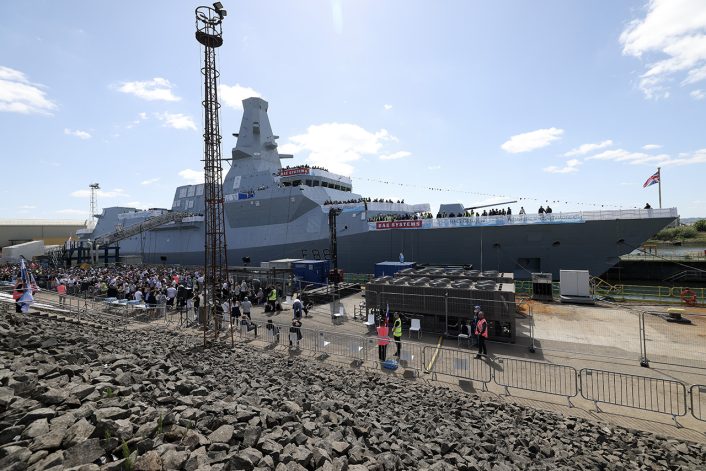
Carrier launched strike missiles are not a completely new concept – most notably, the Russian Kuznetsov class aircraft carrier was designed with 12 missile silos below its flight deck as a primary armament, though these were rumored to be on course for removal during the carrier’s overhaul period (which has faced infamous troubles). It would represent a significant change in doctrine for carrier practice in Western navies, though. The primary concern likely to be raised would be with regards to the potential for FOD, or foreign object debris, to be introduced to the flight deck environment during a missile launch. The deck would have to be made unavailable for flight operations during and after any missile launch.
If any of you nerds wondered why the Nikolai Kuznetsov is designated an aircraft carrying heavy cruiser. In what is probably a boneheaded move, it packs a battery of P-700 Granit solid rocket boosted ramjet powered antiship missiles in silos through the flight deck. pic.twitter.com/pXlVIOIUvU
— Eric Flood (@EricFlo19671974) November 7, 2020
Protector UAVs could take on a maritime patrol role with the addition of pod-mounted radar systems, which would be integrated with the P-8 Poseidon MRA1 fleet as well as Royal Navy frigates. This would go some way to fixing the arguably small fleet of P-8s in comparison to the amount of maritime area critical to the UK’s interests. No specific mention is made of the also MQ-9 derived Mojave STOL UAV which has conducted trials from a UK carrier, but procurement decisions on equipment like this are likely reserved for a later date.
New Medium Helicopter in Limbo?
Despite a statement in April claiming “all capability requirements, including NMH [New Medium Helicopter], are being considered as part of the Strategic Defence Review process”, no mention was made in this SDR regarding the NMH program or any related requirement for the RAF. It may be the case that as the program, though highly delayed, is currently ongoing making any recommendations in this review, pieced together over the last ten months, risked being out of date as soon as it was published.
Further questions regarding NMH are sure to come for the Ministry of Defence in Parliament and elsewhere. With the retirement of the Puma HC2, the chance for a phased fleet transition has long since passed and some of the Puma’s former roles have had to be covered by unspecified stopgaps while rapidly procured Jupiter HC2s are commissioned into service.
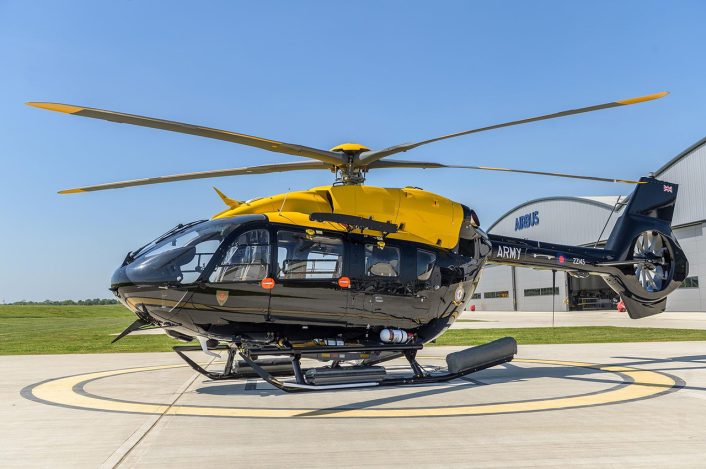
Totalling almost 50,000 words, across 140 pages, the SDR will take time to digest for all who read it. This article can only scratch the surface of the review, and there are many more recommendations and statements in the review that will almost certainly be explored here and elsewhere over the days, weeks, and months to follow.

